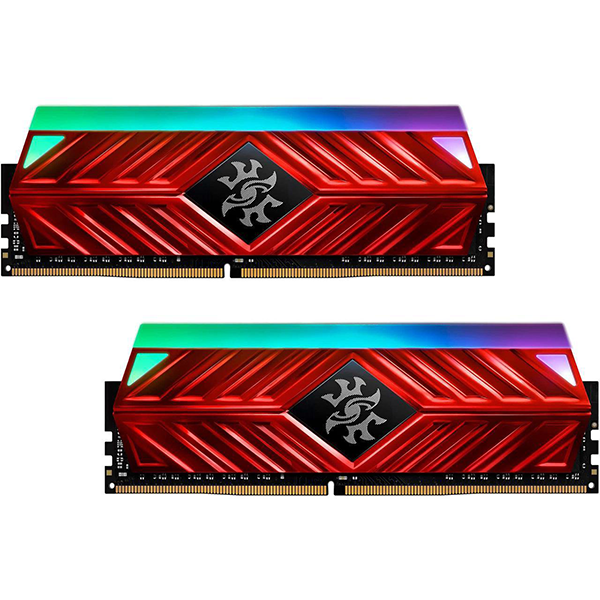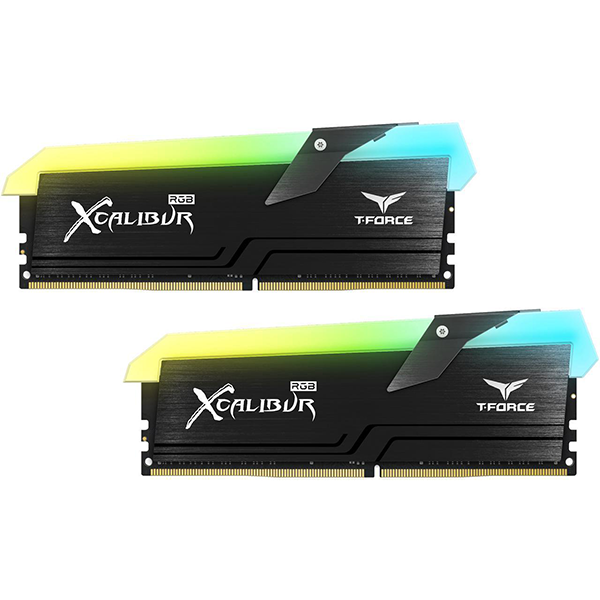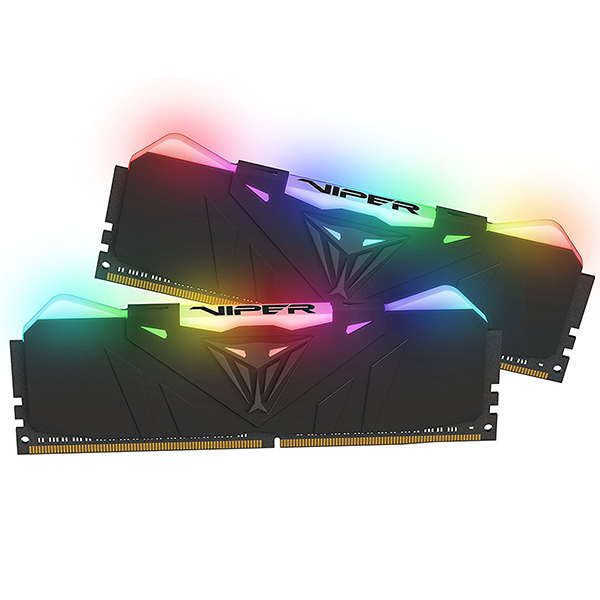Tom's Hardware Verdict
Adata's XPG Spectrix D41 DDR4-3200 provides better performance-per-dollar than its competitors, but the price delta isn't enough for us to ignore the performance deficit.
Pros
- +
Good price and XMP performance
- +
Supports DDR4-2666 in non-XMP mode
- +
Compatible with both motherboard-based and Adata-supplied RGB software
Cons
- -
Price advantage isn't significant
- -
Benchmark results beat only our slowest performance RGB memory kit
Why you can trust Tom's Hardware
As one of the top memory manufacturers, Adata’s limitations for U.S. buyers have always revolved around marketing and availability. Both of those impact the XPG Spectrix D41 DDR4-3200 kit we're looking at today, as the black/dark grey kit with this data rate disappeared from most U.S. outlets at the same time as one of Adata's competitors, Patriot, was rapidly dropping prices to outmaneuver speedy higher-data rate kits. Adata’s identically configured red-colored Spectrix D41 DDR4-3200 kit is still a good value at about $190. But competing kits offer better performance for as little as $16 more (prices for this and competing kits have dropped since this article was written).
The “T” in Adata’s AX4U320038G16-DT41 part number is a color code that likely means “titanium,” as the alternative part number AX4U320038G16-DR41 is identical in every way except the red anodized color. Availability issues have forced us to refer to the red kit, since the dark grey kit is no longer in stock at any of our favorite sellers. Regardless of whether you choose red or grey (if you can find the latter in stock), the 2x 8GB DDR4-3200 kit contains two CAS 16 modules, each fitted with eight DDR4-2666 ICs on one side (single-rank), covered in anodized aluminum heat spreaders and topped with five RGB LEDs and a white plastic light diffuser.
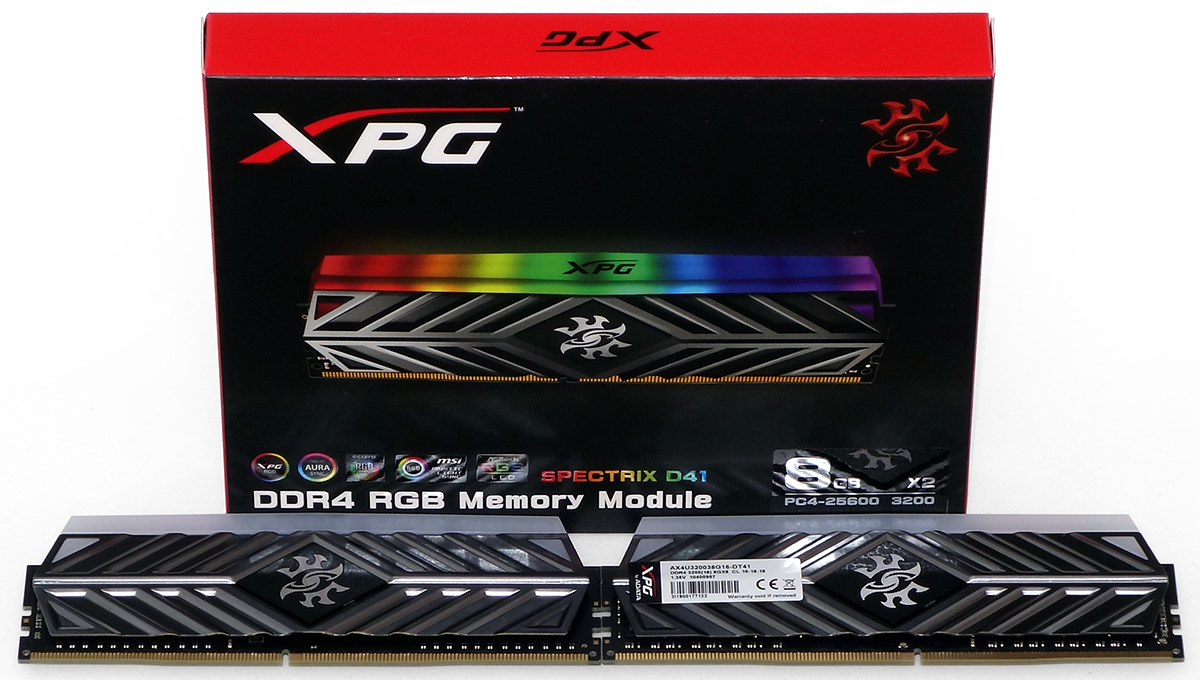

Even though Intel's XMP is an overclocking technology, the Spectrix D41 includes a stock-voltage (1.20V) DDR4-2666 profile with enhanced 16-16-16-39 timings in addition to its rated setting of DDR4-3200 with 16-18-18-36 timings at 1.35V. Users who’ve bought this memory before determining whether or not their motherboard supports XMP will at least have access to industry-standard DDR4-2666 timings, which is better than the typical DDR4-2400 or DDR4-2133 defaults of several competing kits.
We’ve called out other modules that produce pastel colors due to the thickness or opacity of white LED covers, and the XPG Spectrix D41 fits that same description. Even though vibrant colors aren’t available, the pastels are fully adjustable using either the motherboard’s RGB utility (ASRock, Asus, Gigabyte and MSI compatible), or Adata’s own RGB Sync. Adata’s software has the advantage of being able to program each LED individually. But despite its name, the software does not synchronize the timing of LED lights. Our motherboard software synchronized the LED color shift but lacked individual RGB color settings.
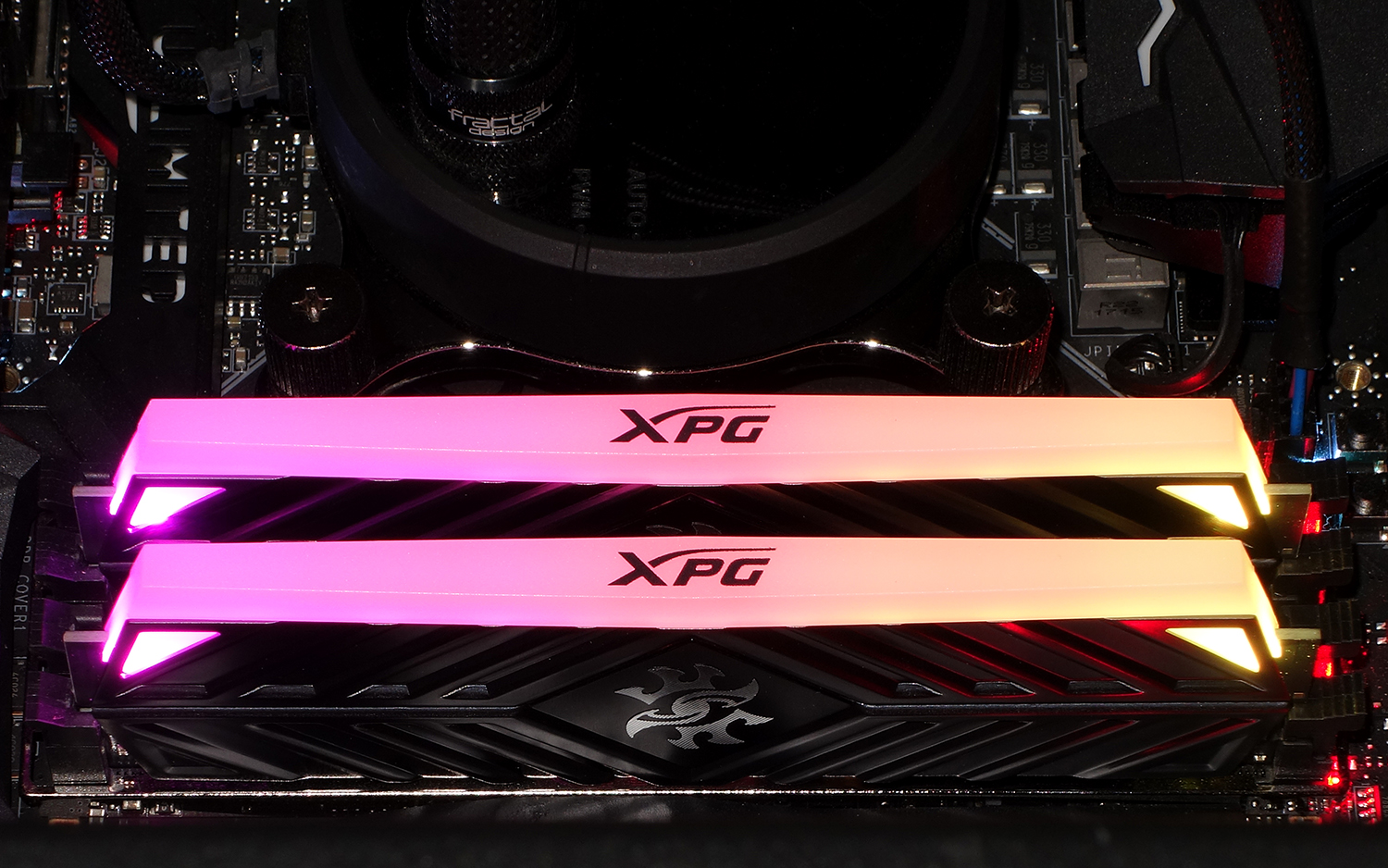
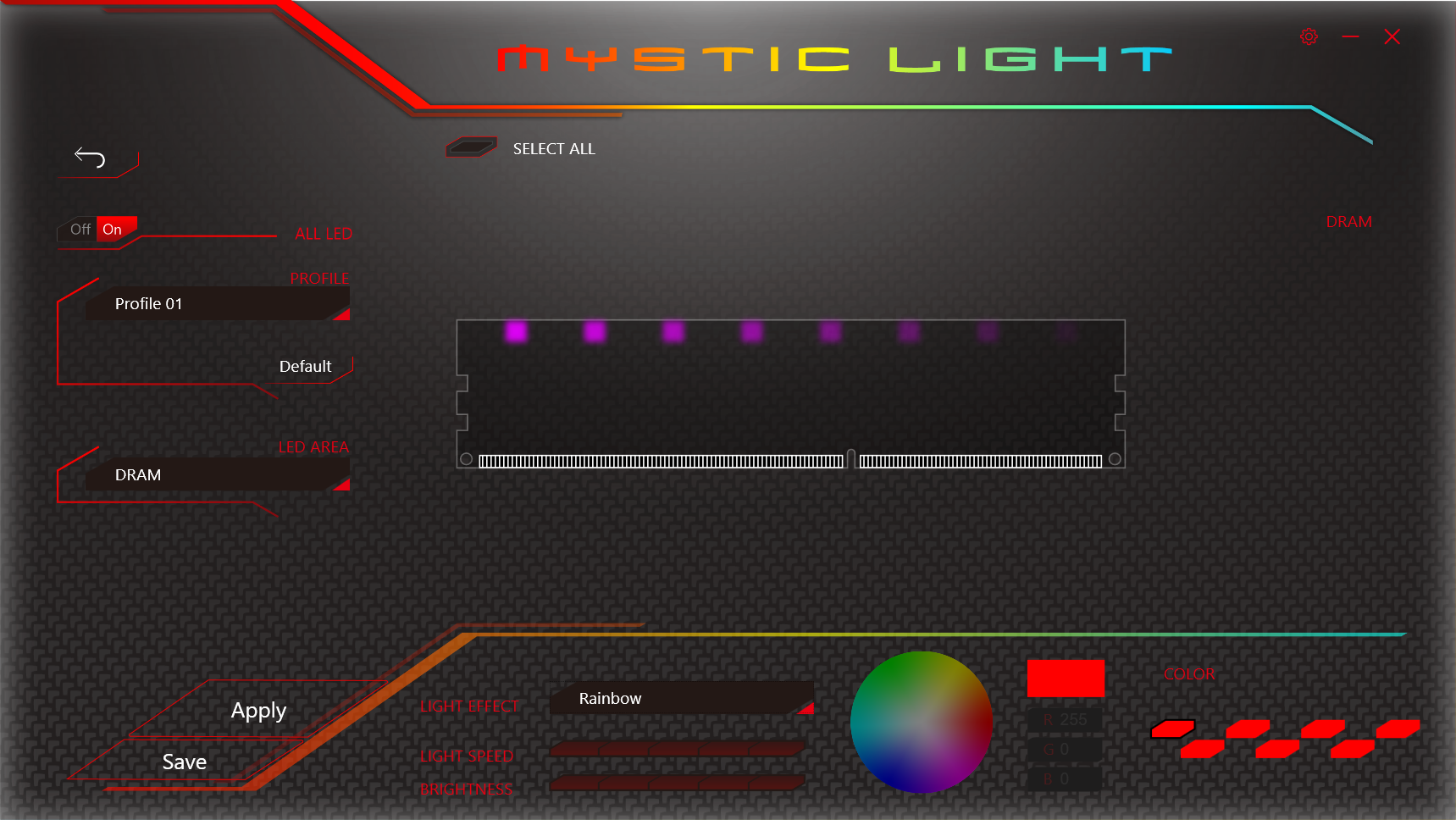

Test & Comparison Hardware
We’re comparing Adata’s XPG Spectrix D41 directly to our most recent 2x 8GB RGB-lit memory kits, using MSI’s Z370 Godlike Gaming motherboard and the hardware from its review. Overclocked to 4.80GHz, Intel's Core i7-8700K works with MSI’s GTX 1080 graphics card and a Toshiba/OCZ RD400 SSD to minimize other system bottlenecks.
We stacked the XPG Spectrix D41 against Adata's XPG Spectrix D80 DDR4-3600, the Patriot Viper RGB DDR4-3600 and the T-Force XCalibur RGB DDR4-3600. All of this year’s 2x 8GB RGB review kits have been DDR4-3600 until now. That’s a tough crowd for Adata's DDR4-3200 kit to face off against, particularly when the Patriot kit already got our Editor’s Choice award. On the other hand, we’ve seen lesser-rated kits beat the competition before.
Latency Tuning, Overclocking & Benchmarks
We begin our evaluation by trying to find the quickest stable timings for each module set at various data rates. Remember that fewer cycles means better performance since latency is set in cycles. DDR4-3200 CAS 16 and DDR4-2400 CAS 12 have the same latency time, since cycle time is the inverse of frequency. And in case you’re wondering why we skipped DDR4-3600 in our latency evaluation, it’s because we chose the three middle settings for their even ratios, then added DDR4-4000 and DDR4-2400 to accommodate faster and slower kits.
Get Tom's Hardware's best news and in-depth reviews, straight to your inbox.
| Lowest Stable Timings at 1.35V (Max) on MSI Z370 Godlike Gaming (BIOS A.40) | |||||
| Row 1 - Cell 0 | DDR4-4000 | DDR4-3733 | DDR4-3200 | DDR4-2666 | DDR4-2400 |
| Adata XPG Spectrix D41 AX4U320038G16-DT41 (2x 8GB single-rank) | ✗ | 17-20-20-40 (2T) | 15-17-17-34 (1T) | 12-14-14-28 (1T) | 11-13-13-28 (1T) |
| T-Force XCalibur RGB TF6D416G3600HC18EDC01 (2x 8GB single-rank) | 19-21-21-42 (2T) | 18-20-20-40 (2T) | 15-17-17-34 (1T) | 13-14-14-28 (1T) | 11-13-13-28 (1T) |
| Patriot Viper RGB 16GB PVR416G360C6K (2x 8GB single-rank) | 18-19-19-38 (2T) | 16-17-17-34 (2T) | 14-14-14-28 (2T) | 12-12-12-28 (1T) | 11-11-11-28 (1T) |
| XPG Spectrix D80 16GB AX4U360038G17-DR80 (2x 8GB single-rank) | 20-21-21-42 (2T) | 16-17-17-34 (2T) | 14-14-14-28 (1T) | 12-12-12-28 (1T) | 11-11-11-28 (1T) |
The Spectrix D41 looks more like Team Group’s T-Force set than Adata’s D80 set in ultimate timing capability. But our dependence on automatic secondary and tertiary configuration means that those settings don’t always represent the full scale of performance differences.
We’re not exactly disheartened by the Spectrix D41's inability to reach DDR4-4000, given its sub-$200 price. Isn’t DDR4-3906 close enough?
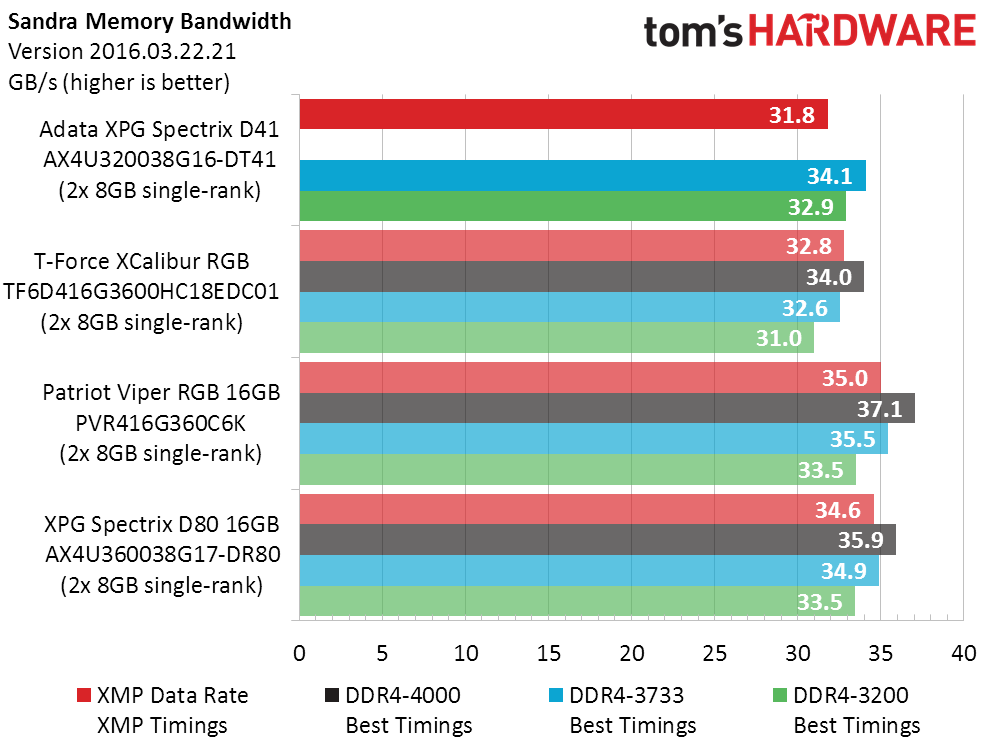

The Spectrix D41's lower XMP setting put it behind the already-slow XCalibur RGB in the Sandra Memory Bandwidth test, but the tables turned when the memory was manually configured to optimal settings. In addition, the Spectrix D41 swept the XCalibur RGB in Sandra Latency, where results are displayed in nanoseconds and lower is better.
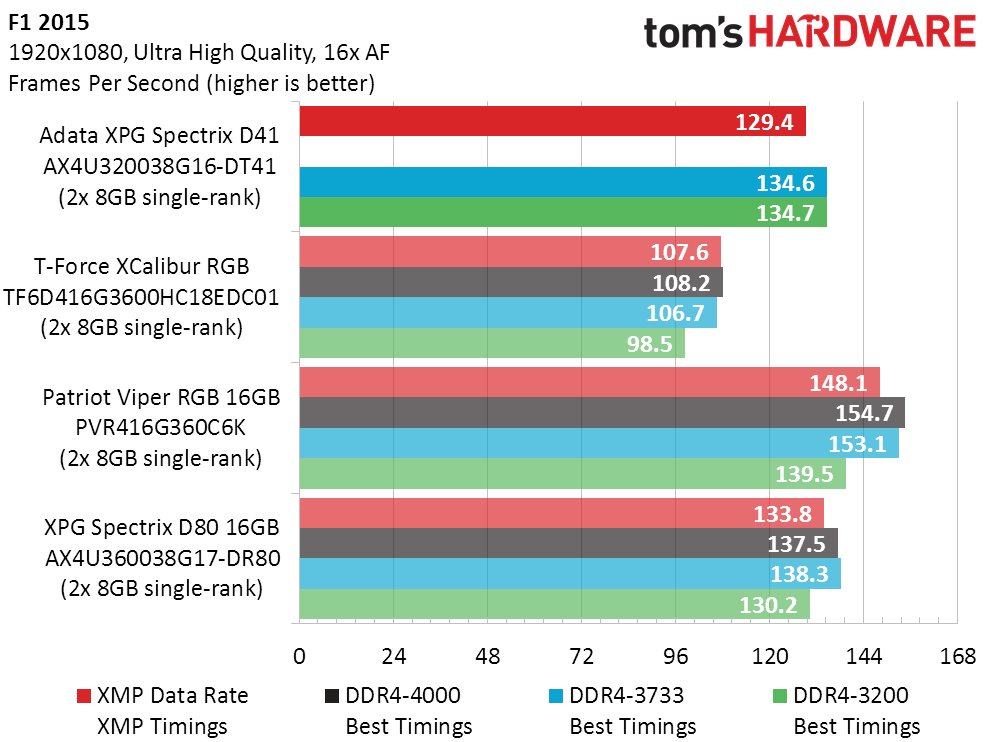
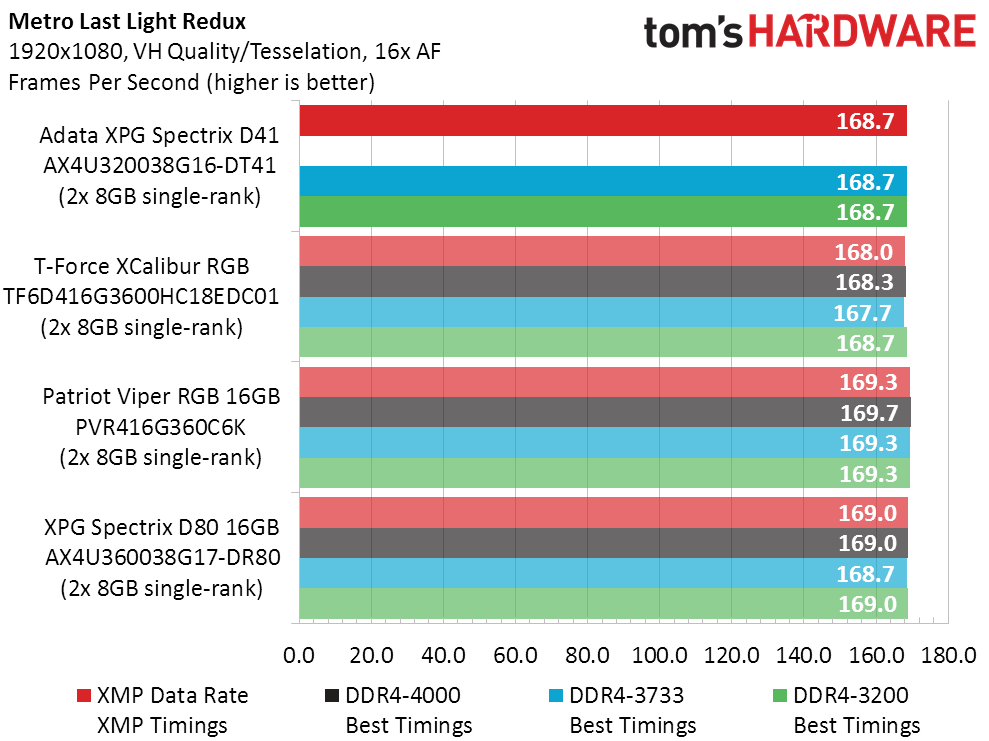
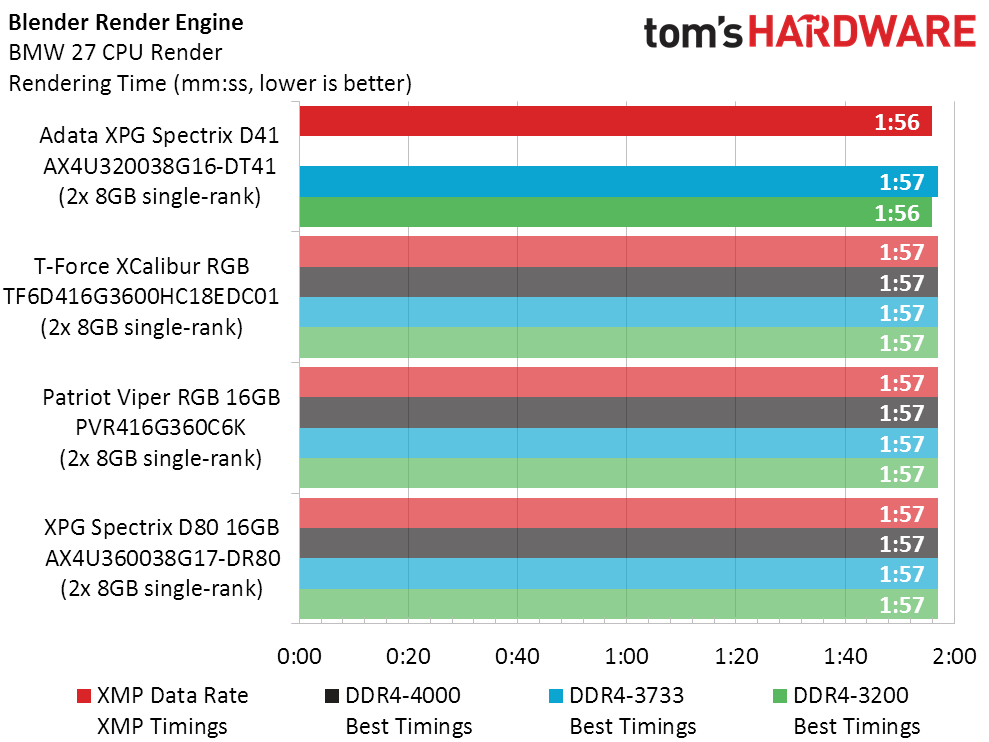

The Viper RGB and Spectrix D80 kits crushed the Spectrix D41 in the F1 2015 benchmark but barely edged it out in 7-Zip. On the other hand, the Spectrix D41 simply embarrasesd the XCalibur RGB in those same tests. It’s nice to see the cheapest kit come out somewhere in the middle.
Price-per-performance is the XPG Spectrix D41’s forte. Even with recent price drops on the Viper RGB making it a superior value since the day it was reviewed, the Spectrix D41 is nearly 10% cheaper and comes out around 3% ahead of the award-winning Patriot set.
The 4-6% performance deficit is still considerable though, and we’re hard-pressed to concern ourselves with a $35 price difference on RAM that's likely to be plugged into a full system that could easily cost 50 times that amount or more. And so we can only recommend the Spectrix D41 to very price-conscious builders who don't care much about memory performance. Those who care about looks, money and performance should spend a little more on faster, flashy memory.
MORE: Best Memory
MORE: DDR DRAM FAQs And Troubleshooting Guide
MORE: All Memory Content
-
Lutfij I don't like this iteration of AData's RGB memory. Their previous versions were, commendable.Reply

